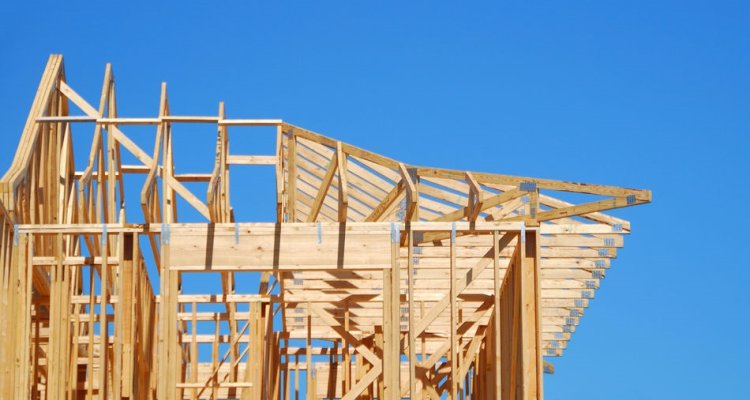
Catalogue offers complete overview of bio-based building materials
Bio-based building materials are gaining ground at the expense of conventional materials which cause substantial carbon dioxide emissions. With its Bio-based Building Materials Catalogue (in Dutch), Wageningen Food & Biobased Research encourages the building industry. This catalogue provides a clear overview of all building materials currently available on the market, including examples of practical applications.
A skyscraper of 350 metres high is no longer an exception in this world, but a skyscraper of this height built of timber rather than cement, concrete and steel is indeed. The city of Tokyo has planned a timber giant like this one and there are more examples. A timber building of 21 floors will be completed in Amsterdam by 2020, Europe’s one but tallest timber building. However, not only timber, but also bio-based materials such as fibreboards, building blocks, resins and roofing, are making steady progress.
Bio-based materials will retain carbon dioxide
“In the production of conventional building materials such as cement, concrete and steel, enormous quantities amounts of carbon dioxide are released”, says Martien van den Oever, researcher of Wageningen Food & Biobased Research. “The significant advantage of bio-based building materials is that they retain carbon dioxide.” Van den Oever is one of the authors of the Bio-based Building Materials Catalogue compiled by Wageningen Food & Biobased Research on assignment from the Dutch Ministry of Economic Affairs and Climate. “The first version of the catalogue dates back to 2012. Since then, the market for bio-based building materials has developed rapidly; an updated version had become indispensable.”
Paris-proof by 2050
According to Van den Oever, the catalogue contains an overview of all bio-based materials which are available in 2019 for the Dutch building industry, including contact data of suppliers and other parties, such as architects and builders who use the materials. There is a growing demand, also thanks to the industry’s ambition to be Paris-proof by 2050. Van den Oever: “With this catalogue, we want to show all parties in the chain, from building owners and manufacturers to builders and architects, which materials are already available and which properties and application possibilities these materials have. The fact that the industry still often holds on to conventional materials, is partly due to ignorance of all the possible options for bio-based materials. This catalogue is meant to encourage all the parties involved.”
From residential complex to company building
A substantial part of the catalogue deals with examples of ‘bio-based’ building projects, from residences and collective residential complexes to company buildings. Van den Oever: “Everywhere in the Netherlands, you will see fine example projects arising. Some builders and architects are already having their specific focus on the bio-based market. However, the market cannot solve the issues itself. I think that the authorities should impose more stringent regulatory frameworks, possibly starting with their own real estate. For sustainability’s sake, you could preserve existing buildings as long as possible, but for new developments, the authorities should set the good example as the inspirator.”
Good availability
According to the researcher, the availability of bio-based feedstock for materials is good: “Certainly if the growth of wind and solar energy continues and the use of bio-mass in the petrol tank remains limited and we do not use virgin bio-mass to generate electricity. Then sufficient bio-mass will remain to meet the growing demand of bio-based construction materials.”
The book presentation of the catalogue took place at the National Conference for Circular Economy on 21 February 2019 in The Hague. The catalogue is available as a free download in PDF format.
